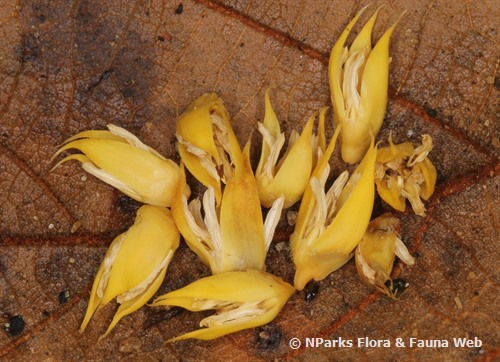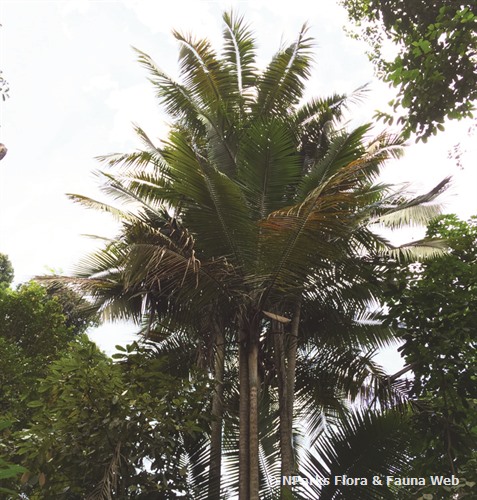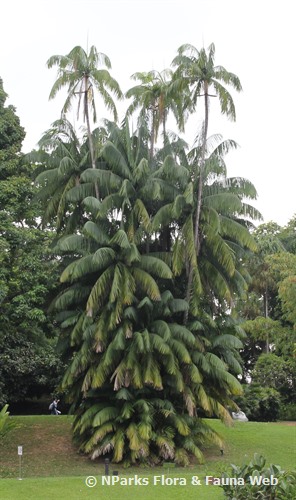
Name
Classifications and Characteristics
| Plant Growth Form | Palm |
|---|---|
| Maximum Height | 20 m |
Biogeography
| Native Distribution | Peninsular Malaysia, Singapore, the Philippines, and Borneo |
|---|---|
| Native Habitat | Terrestrial |
| Preferred Climate Zone | Tropical |
| Local Conservation Status | Native to Singapore (Vulnerable (VU)) |
Description and Ethnobotany
| Growth Form | It is a slender palm that grows in clusters of 4–6 stems or more, and has very dense crowns. Its stem can grow up to 20 m tall, and is covered with black prickles. |
|---|---|
| Foliage | It produces pinnate leaves, whose leaflets are arranged closely and neatly on both sides of the rachis, like the teeth of a comb. |
| Flowers | Its spirally arranged flowers are unisexual, and develop on up to 61 cm-long flowering shoots. |
| Fruit | Its fleshy fruits are round, slightly flattened, waxy, black, one-seeded, and 1.5–1.8 cm across, with finely pimpled surfaces. Its seeds are round. |
| Habitat | It grows in inland forests, including hillsides, up to 914 m altitude. It occurs locally in the Central Catchment Nature Reserve, and Pulau Tekong. |
| Etymology | Greek onkos, protuberance; Greek sperma, seed, referring to the surfaces of its seeds; Latin horridum, very prickly, referring to the presence of prickles on this species’ trunks |
Landscaping Features
| Usage Hazard - Cons | Spines/Thorns - Trunk |
|---|
Plant Care and Propagation
| Light Preference | Full Sun, Semi-Shade |
|---|---|
| Water Preference | Moderate Water |
| Plant Growth Rate | Fast |
Foliar
| Mature Foliage Colour(s) | Green |
|---|---|
| Foliar Shape(s) | Palm Fronds |
Fruit, Seed and Spore
| Mature Fruit Colour(s) | Black |
|---|
References
| References | Keng, H., S.C. Chin and H.T.W. Tan. 1998. The Concise Flora of Singapore Volume II: Monocotyledons. Singapore: Singapore University Press. 215 LaFrankie Jr., J. V.. 2010. Trees of Tropical Asia: An Illustrated Guide to Diversity.. Manilla.: Black Tree Publications, Inc.. 750 pp. |
|---|
Image Repository
Others
| Master ID | 1950 |
|---|---|
| Species ID | 3242 |
| Flora Disclaimer | The information in this website has been compiled from reliable sources, such as reference works on medicinal plants. It is not a substitute for medical advice or treatment and NParks does not purport to provide any medical advice. Readers should always consult his/her physician before using or consuming a plant for medicinal purposes. |


